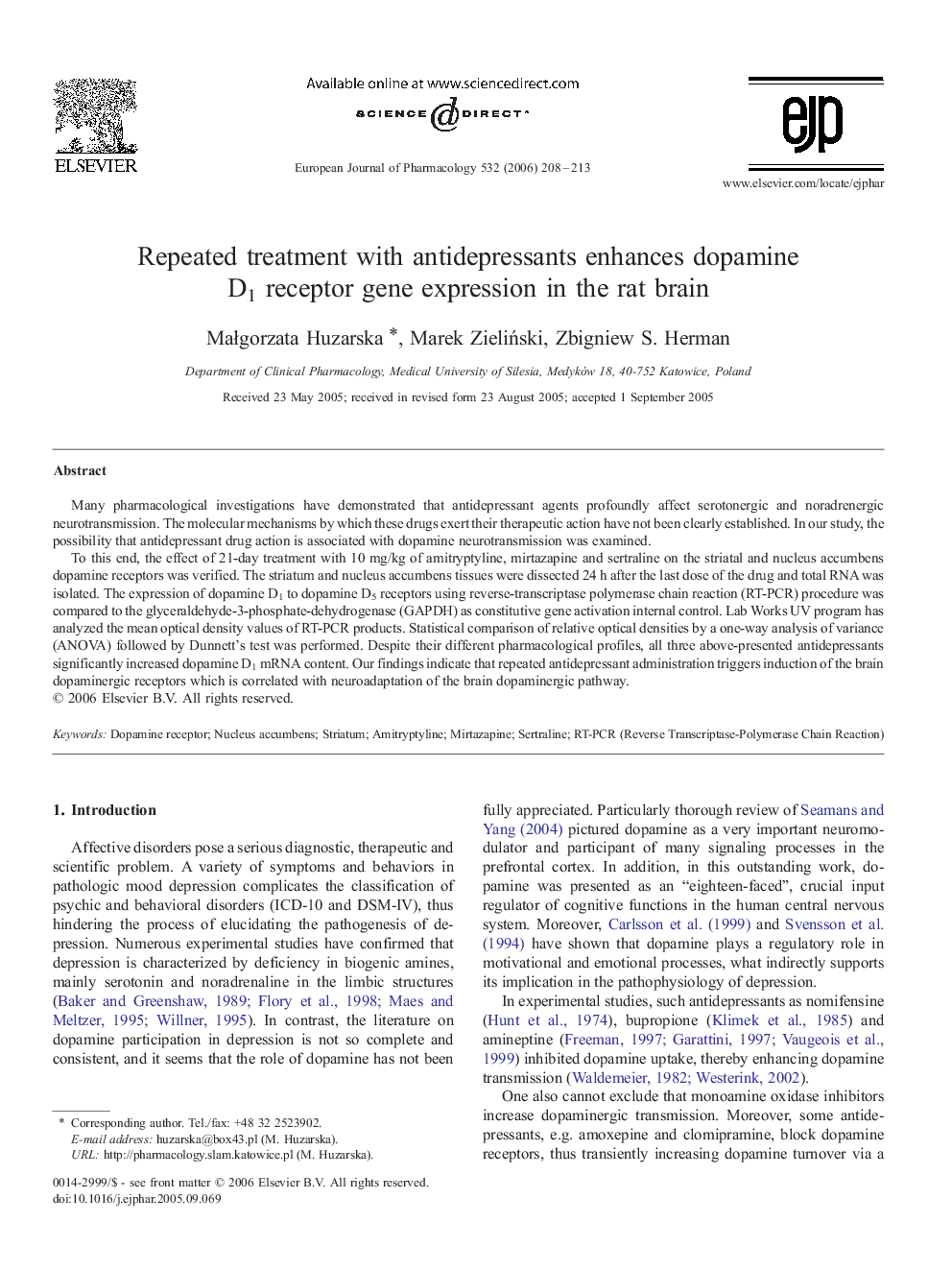| Article ID | Journal | Published Year | Pages | File Type |
|---|---|---|---|---|
| 2537371 | European Journal of Pharmacology | 2006 | 6 Pages |
Many pharmacological investigations have demonstrated that antidepressant agents profoundly affect serotonergic and noradrenergic neurotransmission. The molecular mechanisms by which these drugs exert their therapeutic action have not been clearly established. In our study, the possibility that antidepressant drug action is associated with dopamine neurotransmission was examined.To this end, the effect of 21-day treatment with 10 mg/kg of amitryptyline, mirtazapine and sertraline on the striatal and nucleus accumbens dopamine receptors was verified. The striatum and nucleus accumbens tissues were dissected 24 h after the last dose of the drug and total RNA was isolated. The expression of dopamine D1 to dopamine D5 receptors using reverse-transcriptase polymerase chain reaction (RT-PCR) procedure was compared to the glyceraldehyde-3-phosphate-dehydrogenase (GAPDH) as constitutive gene activation internal control. Lab Works UV program has analyzed the mean optical density values of RT-PCR products. Statistical comparison of relative optical densities by a one-way analysis of variance (ANOVA) followed by Dunnett's test was performed. Despite their different pharmacological profiles, all three above-presented antidepressants significantly increased dopamine D1 mRNA content. Our findings indicate that repeated antidepressant administration triggers induction of the brain dopaminergic receptors which is correlated with neuroadaptation of the brain dopaminergic pathway.
